
Although rain was forecast, what little there was was over by the time we arrived at Kloof Nek to meet Pauline. (I think I must be going through a smelly phase as no-one seems to want to walk with us anymore.) But we were very happy to see Pauline! We set off along the Pipe Track, tails up, and soon came upon this magnificent building which was built in the 1830s to house a water filtration plant that turns the red-brown waters of the Hely-Hutchinson and Woodhead dams on top of Table Mountain into crystal clear water for the people of Cape Town to drink. The building was designed by
Patrick Henry Thomas Shillington and
Franklin Kaye Kendall for the Cape Town City Council.

The Pipe Track goes through an interesting population of Tolbos or Spinningtop Conebushes (
Leucadendron rubrum). It is the only population that occurs on the Cape Peninsula. (The one on Lions Head has long since been built upon.) The Tolbos belongs to a group of conebushes, the
silver conebushes, that includes the famous Silver Tree, and they all seem to like growing in the teeth of the Southeaster.

Although a few of the bushes were dead, there were lots and lots of new bushes coming up - we could see them all the way up the mountain side near the Water Filtration Plant.

There was no Southeaster today, and we really really loved all the puddles from the early morning rain. Some of the Apostle buttresses in the distance.

March lilies (
Amaryllis belladonna), rained upon, spotted by the Alph.

Specks in the sky - actually paragliders jumping off Lion's Head.

The Food Lady likes these stone walls along the Pipe Track. They were built well over 100 years ago, in 1887 which was when the Pipe Track was built to service the pipe that brought water from the dams down the side of the mountain to Cape Town.

We passed a group of hikers, one of whom the Food Lady knew - Marilyn from Book Club - but they turned up towards Diagonal Gorge - and disappeared into the misty, spooky hills where the ghosts of runaway slaves and deserters like
Joshua Penny haunt the steep slopes.

After an hour of gentle walking, we paused for a civilized tea on a bench overlooking Camps Bay,

sheltered by a large, gently scented Box Phylica (
Phylica buxifolia) which had a few bright red star shaped flowers which we have never noticed before.

We walked a little further on, then we came upon this domed building (which we have seen before) that is apparently a "break-pressure plant" built at the same time as the Pipe Track in 1887. We used it as the halfway mark, and reluctantly turned round.

But first I did a bit of exploring myself.

The Food Lady liked this prickly
Cliffortia, probably Climber's Friend (
C. ruscifolia) with red stems and red fluffy flowers. They are related to roses. The red fluffiness is the female flower's feathery styles.

Twirly False Dodder (
Cassytha ciliolata) on the stone walls. This twining, parasitic plant is, bizarrely, related to the Stinkwood Tree as it is also a member of the Lauraceae or laurel family.

Cool pools for hot scots.

These two ladies and a sausage dog were doing a spot of alien eradication on the path back to Kloof Nek. They looked at us in a fierce way as if to say "Lazy, lazy people - just enjoying the mountain but not helping to preserve it!"

But we were quite tired and not in the mood for any alien hacking. Almost back at the cars now - one more bridge to cross. You can see the water pipe on the right.

We then went to see if we could spot our surfing cousins doing their thing in the Lifesaving Champs on Clifton, but no dogs were allowed

so we just had a look around the parking lot, chatted to Julia (who was a bit cross because Anna's bag had been stolen from Camps Bay beach with her cellphone, wetsuit and other stuff),

watched some paragliders coming in, then headed home,

stopping only to buy some hanepoot grapes at Constantia Nek.

That afternoon we were left at home while they went out to celebrate Edmund's 21st.

And they didn't even bring us home a cupcake! (Made by Clare).
 Although rain was forecast, what little there was was over by the time we arrived at Kloof Nek to meet Pauline. (I think I must be going through a smelly phase as no-one seems to want to walk with us anymore.) But we were very happy to see Pauline! We set off along the Pipe Track, tails up, and soon came upon this magnificent building which was built in the 1830s to house a water filtration plant that turns the red-brown waters of the Hely-Hutchinson and Woodhead dams on top of Table Mountain into crystal clear water for the people of Cape Town to drink. The building was designed by Patrick Henry Thomas Shillington and Franklin Kaye Kendall for the Cape Town City Council.
Although rain was forecast, what little there was was over by the time we arrived at Kloof Nek to meet Pauline. (I think I must be going through a smelly phase as no-one seems to want to walk with us anymore.) But we were very happy to see Pauline! We set off along the Pipe Track, tails up, and soon came upon this magnificent building which was built in the 1830s to house a water filtration plant that turns the red-brown waters of the Hely-Hutchinson and Woodhead dams on top of Table Mountain into crystal clear water for the people of Cape Town to drink. The building was designed by Patrick Henry Thomas Shillington and Franklin Kaye Kendall for the Cape Town City Council. The Pipe Track goes through an interesting population of Tolbos or Spinningtop Conebushes (Leucadendron rubrum). It is the only population that occurs on the Cape Peninsula. (The one on Lions Head has long since been built upon.) The Tolbos belongs to a group of conebushes, the silver conebushes, that includes the famous Silver Tree, and they all seem to like growing in the teeth of the Southeaster.
The Pipe Track goes through an interesting population of Tolbos or Spinningtop Conebushes (Leucadendron rubrum). It is the only population that occurs on the Cape Peninsula. (The one on Lions Head has long since been built upon.) The Tolbos belongs to a group of conebushes, the silver conebushes, that includes the famous Silver Tree, and they all seem to like growing in the teeth of the Southeaster. Although a few of the bushes were dead, there were lots and lots of new bushes coming up - we could see them all the way up the mountain side near the Water Filtration Plant.
Although a few of the bushes were dead, there were lots and lots of new bushes coming up - we could see them all the way up the mountain side near the Water Filtration Plant. There was no Southeaster today, and we really really loved all the puddles from the early morning rain. Some of the Apostle buttresses in the distance.
There was no Southeaster today, and we really really loved all the puddles from the early morning rain. Some of the Apostle buttresses in the distance. March lilies (Amaryllis belladonna), rained upon, spotted by the Alph.
March lilies (Amaryllis belladonna), rained upon, spotted by the Alph. Specks in the sky - actually paragliders jumping off Lion's Head.
Specks in the sky - actually paragliders jumping off Lion's Head. The Food Lady likes these stone walls along the Pipe Track. They were built well over 100 years ago, in 1887 which was when the Pipe Track was built to service the pipe that brought water from the dams down the side of the mountain to Cape Town.
The Food Lady likes these stone walls along the Pipe Track. They were built well over 100 years ago, in 1887 which was when the Pipe Track was built to service the pipe that brought water from the dams down the side of the mountain to Cape Town. We passed a group of hikers, one of whom the Food Lady knew - Marilyn from Book Club - but they turned up towards Diagonal Gorge - and disappeared into the misty, spooky hills where the ghosts of runaway slaves and deserters like Joshua Penny haunt the steep slopes.
We passed a group of hikers, one of whom the Food Lady knew - Marilyn from Book Club - but they turned up towards Diagonal Gorge - and disappeared into the misty, spooky hills where the ghosts of runaway slaves and deserters like Joshua Penny haunt the steep slopes. After an hour of gentle walking, we paused for a civilized tea on a bench overlooking Camps Bay,
After an hour of gentle walking, we paused for a civilized tea on a bench overlooking Camps Bay, sheltered by a large, gently scented Box Phylica (Phylica buxifolia) which had a few bright red star shaped flowers which we have never noticed before.
sheltered by a large, gently scented Box Phylica (Phylica buxifolia) which had a few bright red star shaped flowers which we have never noticed before. We walked a little further on, then we came upon this domed building (which we have seen before) that is apparently a "break-pressure plant" built at the same time as the Pipe Track in 1887. We used it as the halfway mark, and reluctantly turned round.
We walked a little further on, then we came upon this domed building (which we have seen before) that is apparently a "break-pressure plant" built at the same time as the Pipe Track in 1887. We used it as the halfway mark, and reluctantly turned round. But first I did a bit of exploring myself.
But first I did a bit of exploring myself. The Food Lady liked this prickly Cliffortia, probably Climber's Friend (C. ruscifolia) with red stems and red fluffy flowers. They are related to roses. The red fluffiness is the female flower's feathery styles.
The Food Lady liked this prickly Cliffortia, probably Climber's Friend (C. ruscifolia) with red stems and red fluffy flowers. They are related to roses. The red fluffiness is the female flower's feathery styles. Twirly False Dodder (Cassytha ciliolata) on the stone walls. This twining, parasitic plant is, bizarrely, related to the Stinkwood Tree as it is also a member of the Lauraceae or laurel family.
Twirly False Dodder (Cassytha ciliolata) on the stone walls. This twining, parasitic plant is, bizarrely, related to the Stinkwood Tree as it is also a member of the Lauraceae or laurel family. Cool pools for hot scots.
Cool pools for hot scots. These two ladies and a sausage dog were doing a spot of alien eradication on the path back to Kloof Nek. They looked at us in a fierce way as if to say "Lazy, lazy people - just enjoying the mountain but not helping to preserve it!"
These two ladies and a sausage dog were doing a spot of alien eradication on the path back to Kloof Nek. They looked at us in a fierce way as if to say "Lazy, lazy people - just enjoying the mountain but not helping to preserve it!" But we were quite tired and not in the mood for any alien hacking. Almost back at the cars now - one more bridge to cross. You can see the water pipe on the right.
But we were quite tired and not in the mood for any alien hacking. Almost back at the cars now - one more bridge to cross. You can see the water pipe on the right. We then went to see if we could spot our surfing cousins doing their thing in the Lifesaving Champs on Clifton, but no dogs were allowed
We then went to see if we could spot our surfing cousins doing their thing in the Lifesaving Champs on Clifton, but no dogs were allowed so we just had a look around the parking lot, chatted to Julia (who was a bit cross because Anna's bag had been stolen from Camps Bay beach with her cellphone, wetsuit and other stuff),
so we just had a look around the parking lot, chatted to Julia (who was a bit cross because Anna's bag had been stolen from Camps Bay beach with her cellphone, wetsuit and other stuff),  watched some paragliders coming in, then headed home,
watched some paragliders coming in, then headed home, stopping only to buy some hanepoot grapes at Constantia Nek.
stopping only to buy some hanepoot grapes at Constantia Nek. That afternoon we were left at home while they went out to celebrate Edmund's 21st.
That afternoon we were left at home while they went out to celebrate Edmund's 21st. And they didn't even bring us home a cupcake! (Made by Clare).
And they didn't even bring us home a cupcake! (Made by Clare).


























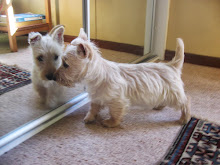


















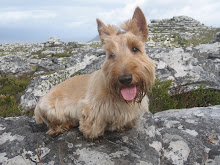
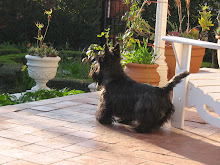






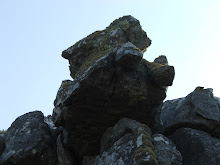



























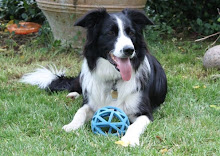

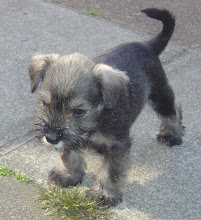













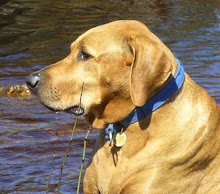
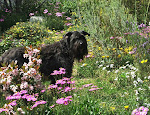



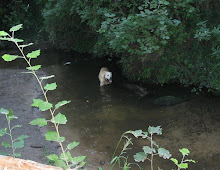



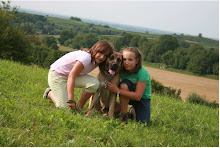

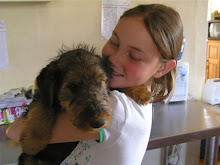








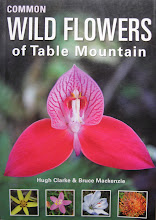


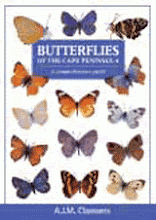






No comments:
Post a Comment